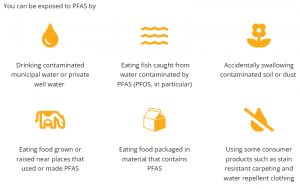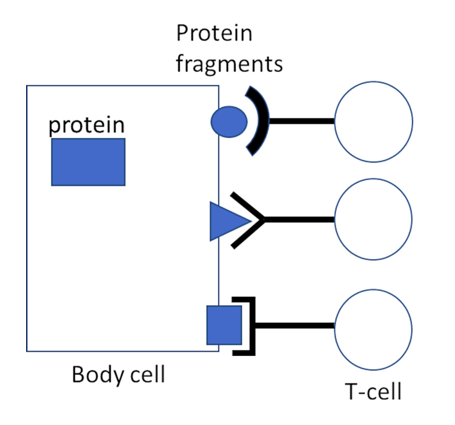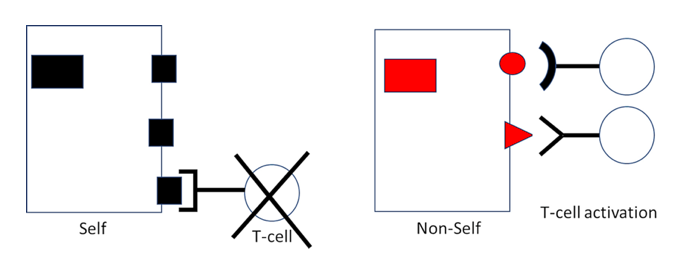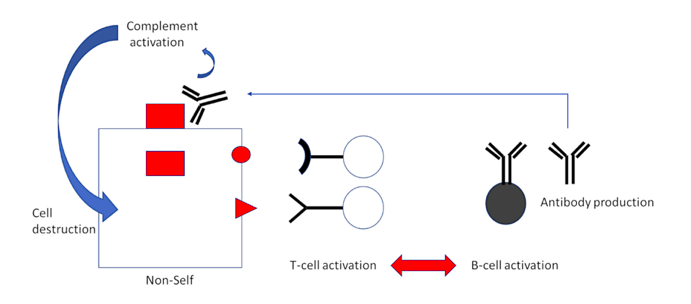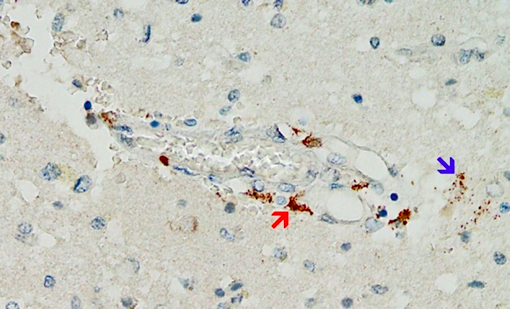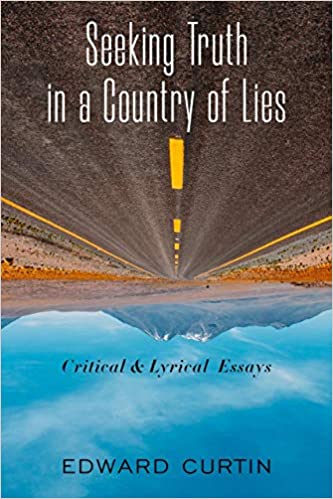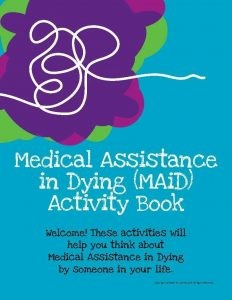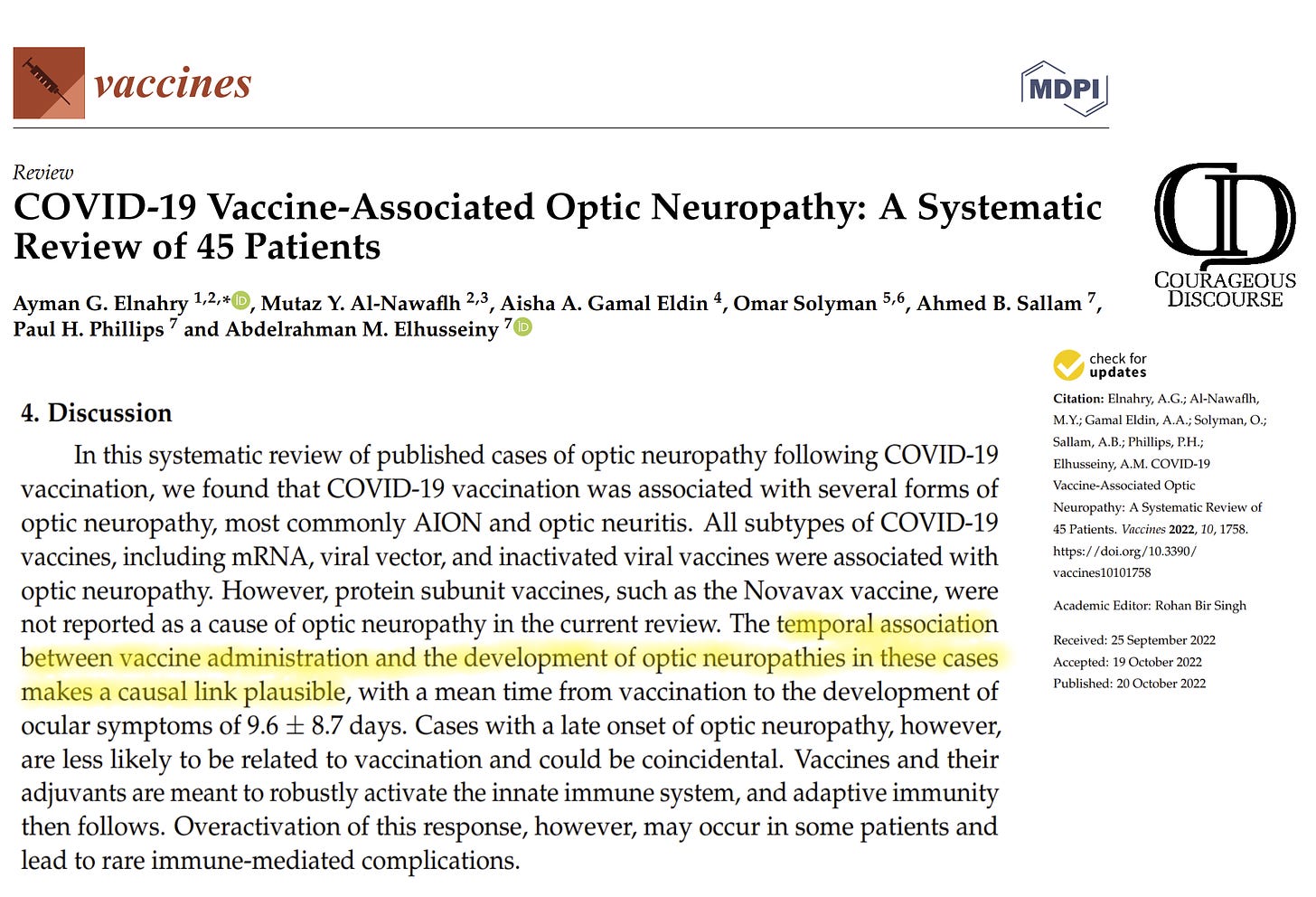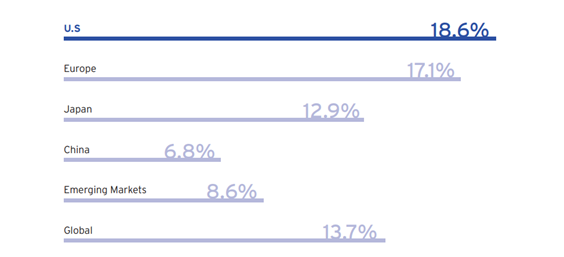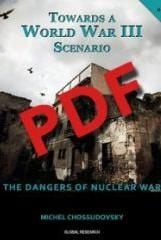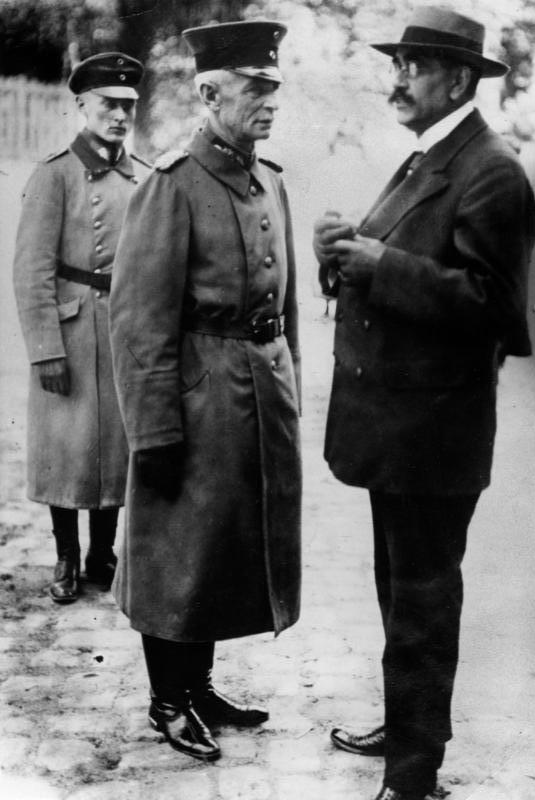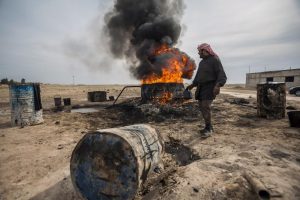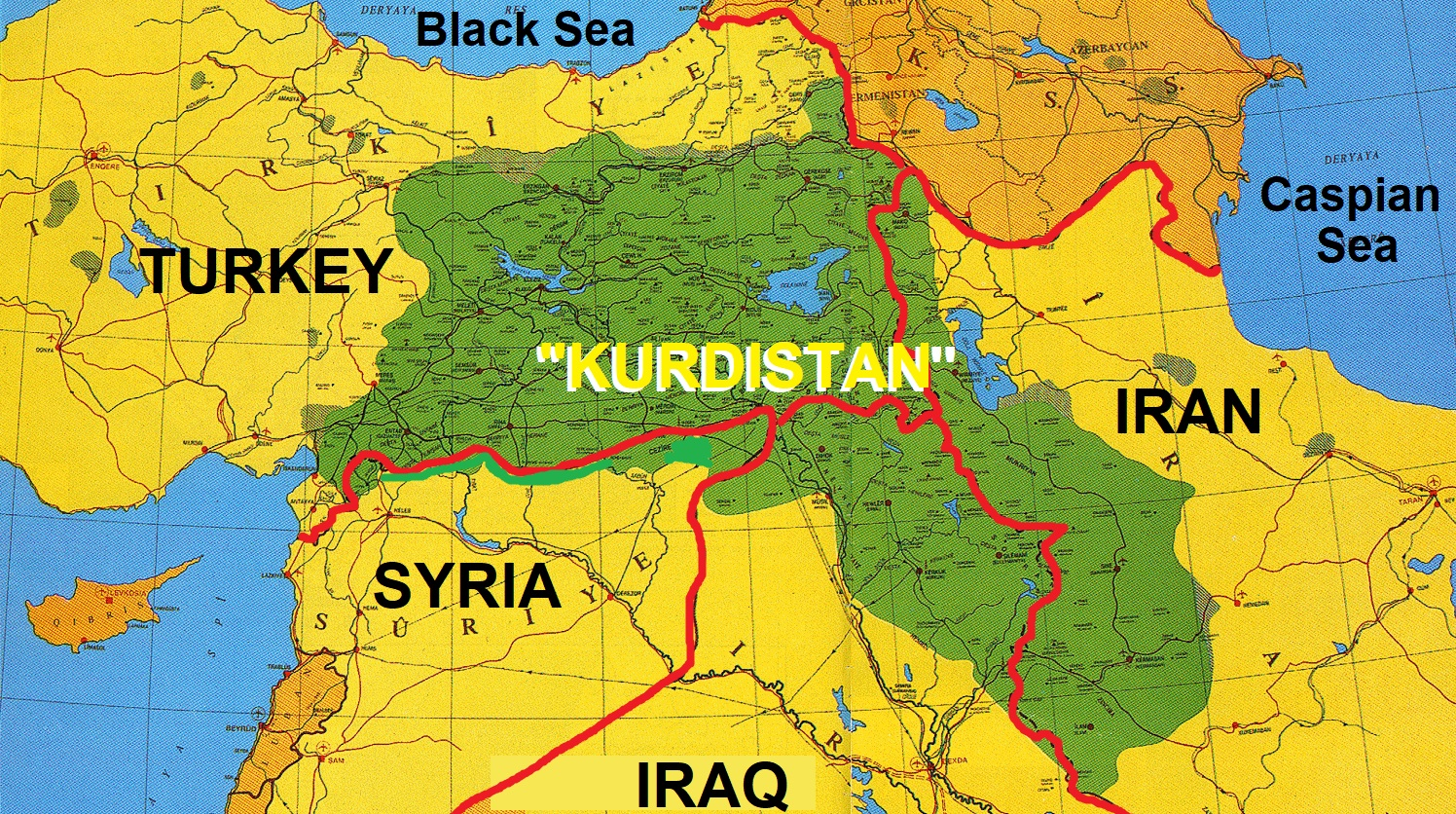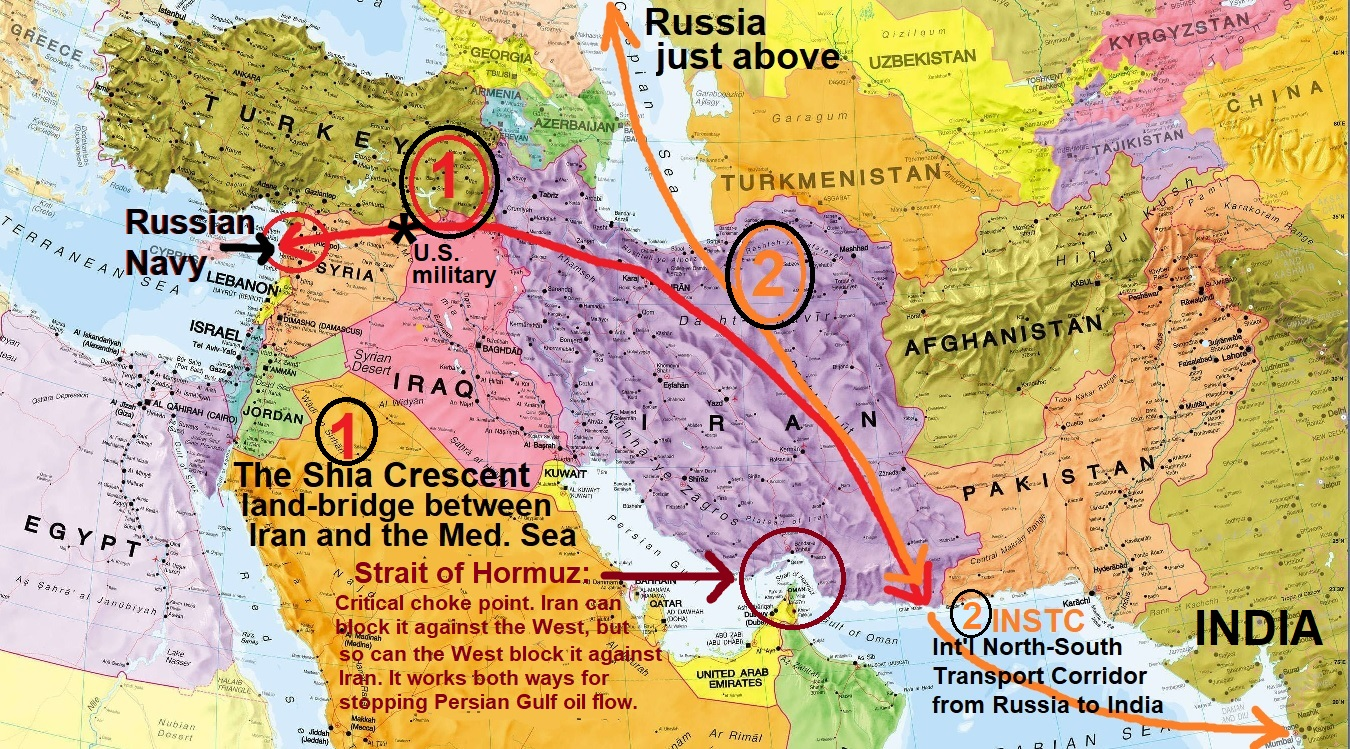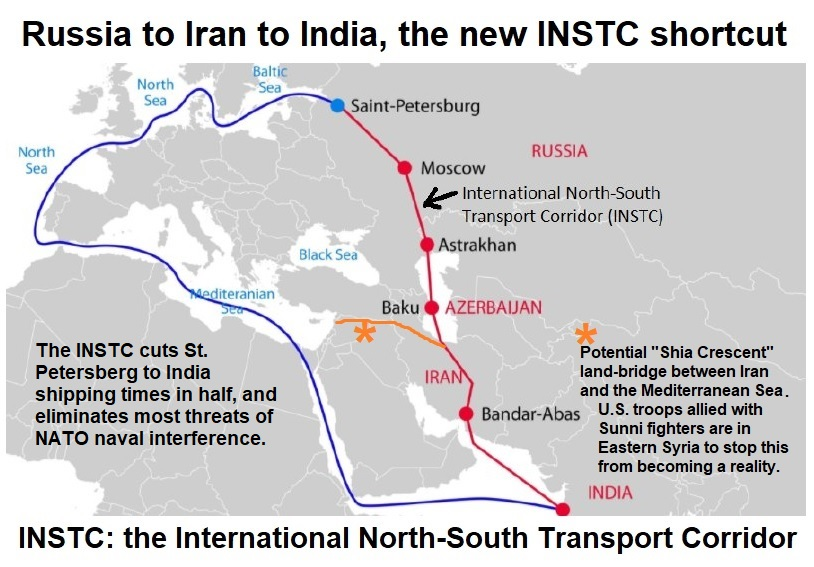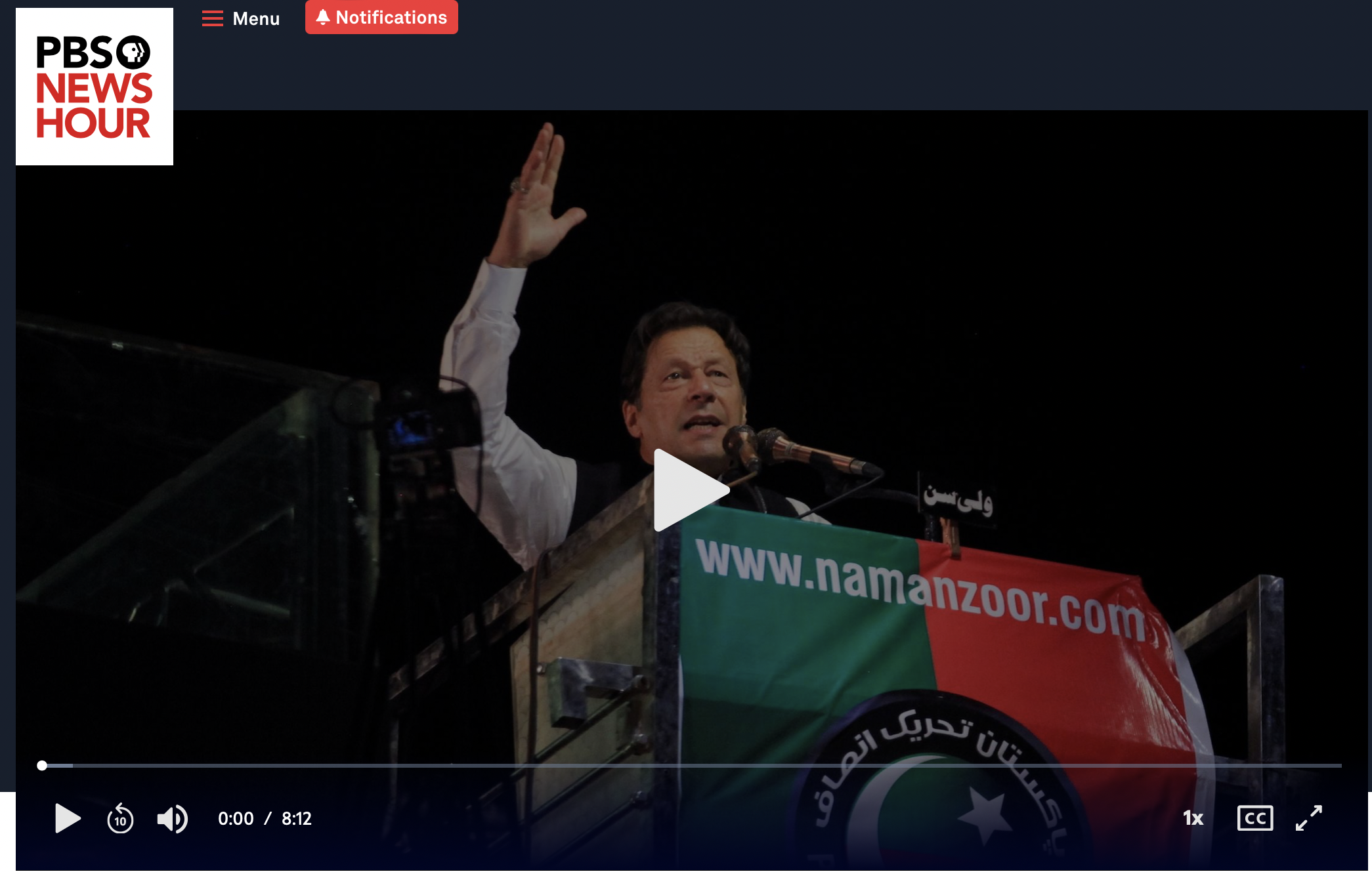David Ray Griffin has passed away.
His commitment to 9/11 Truth will prevail.
His Legacy will Live.
This article by award winning author Professor David Ray Griffin was first published by Global Research in June 2010
*
There are many questions to ask about the war in Afghanistan. One that has been widely asked is whether it will turn out to be “Obama’s Vietnam.”1 This question implies another: Is this war winnable, or is it destined to be a quagmire, like Vietnam? These questions are motivated in part by the widespread agreement that the Afghan government, under Hamid Karzai, is at least as corrupt and incompetent as the government the United States tried to prop up in South Vietnam for 20 years.
Although there are many similarities between these two wars, there is also a big difference: This time, there is no draft. If there were a draft, so that college students and their friends back home were being sent to Afghanistan, there would be huge demonstrations against this war on campuses all across this country. If the sons and daughters of wealthy and middle-class parents were coming home in boxes, or with permanent injuries or post-traumatic stress syndrome, this war would have surely been stopped long ago. People have often asked: Did we learn any of the “lessons of Vietnam”? The US government learned one: If you’re going to fight unpopular wars, don’t have a draft – hire mercenaries!
There are many other questions that have been, and should be, asked about this war, but in this essay, I focus on only one: Did the 9/11 attacks justify the war in Afghanistan?
This question has thus far been considered off-limits, not to be raised in polite company, and certainly not in the mainstream media. It has been permissible, to be sure, to ask whether the war during the past several years has been justified by those attacks so many years ago. But one has not been allowed to ask whether the original invasion was justified by the 9/11 attacks.
However, what can be designated the “McChrystal Moment” – the probably brief period during which the media are again focused on the war in Afghanistan in the wake of the Rolling Stone story about General Stanley McChrystal, the commander of US and NATO forces in Afghanistan, which led to his resignation – provides the best opportunity for some time to raise fundamental questions about this war. Various commentators have already been asking some pretty basic questions: about the effectiveness and affordability of the present “counterinsurgency strategy” and even whether American fighting forces should remain in Afghanistan at all. But I am interested in an even more fundamental question: Whether this war was ever really justified by the publicly given reason: the terrorist attacks of September 11, 2001.
This question has two parts: First, did these attacks provide a legal justification for the invasion of Afghanistan? Second, if not, did they at least provide a moral justification?
I. Did 9/11 Provide Legal Justification for the War in Afghanistan?
Since the founding of the United Nations in 1945, international law with regard to war has been defined by the UN Charter. Measured by this standard, the US-led war in Afghanistan has been illegal from the outset.
Marjorie Cohn, a well-known professor of international law, wrote in November 2001:
“[T]he bombings of Afghanistan by the United States and the United Kingdom are illegal.”2
In 2008, Cohn repeated this argument in an article entitled “Afghanistan: The Other Illegal War.” The point of the title was that, although it was by then widely accepted that the war in Iraq was illegal, the war in Afghanistan, in spite of the fact that many Americans did not realize it, was equally illegal.3 Her argument was based on the following facts:
First, according to international law as codified in the UN Charter, disputes are to be brought to the UN Security Council, which alone may authorize the use of force. Without this authorization, any military activity against another country is illegal.
Second, there are two exceptions: One is that, if your nation has been subjected to an armed attack by another nation, you may respond militarily in self-defense. This condition was not fulfilled by the 9/11 attacks, however, because they were not carried out by another nation: Afghanistan did not attack the United States. Indeed, the 19 men charged with the crime were not Afghans.
The other exception occurs when one nation has certain knowledge that an armed attack by another nation is imminent – too imminent to bring the matter to the Security Council. The need for self-defense must be, in the generally accepted phrase, “instant, overwhelming, leaving no choice of means, and no moment for deliberation.” Although the US government claimed that its military operations in Afghanistan were justified by the need to prevent a second attack, this need, even if real, was clearly not urgent, as shown by the fact that the Pentagon did not launch its invasion until almost a month later.
US political leaders have claimed, to be sure, that the UN did authorize the US attack on Afghanistan. This claim, originally made by the Bush-Cheney administration, was repeated by President Obama in his West Point speech of December 1, 2009, in which he said: “The United Nations Security Council endorsed the use of all necessary steps to respond to the 9/11 attacks,” so US troops went to Afghanistan “[u]nder the banner of . . . international legitimacy.”4
However, the language of “all necessary steps” is from UN Security Council Resolution 1368, in which the Council, taking note of its own “responsibilities under the Charter,” expressed its own readiness “to take all necessary steps to respond to the terrorist attacks of 11 September 2001.”5
Of course, the UN Security Council might have determined that one of these necessary steps was to authorize an attack on Afghanistan by the United States. But it did not. Resolution 1373, the only other Security Council resolution about this issue, laid out various responses, but these included matters such as freezing assets, criminalizing the support of terrorists, exchanging police information
about terrorists, and prosecuting terrorists. The use of military force was not mentioned.6
The US war in Afghanistan was not authorized by the UN Security Council in 2001 or at anytime since, so this war began as an illegal war and remains an illegal war today. Our government’s claim to the contrary is false.
This war has been illegal, moreover, not only under international law, but also under US law. The UN Charter is a treaty, which was ratified by the United States, and, according to Article VI of the US Constitution, any treaty ratified by the United States is part of the “supreme law of the land.”7 The war in Afghanistan, therefore, has from the beginning been in violation of US as well as international law. It could not be more illegal.
II. Did 9/11 Provide Moral Justification for the War in Afghanistan?
The American public has for the most part probably been unaware of the illegality of this war, because this is not something our political leaders or our corporate media have been anxious to point out.8 So most people simply do not know.
If they were informed, however, many Americans would be inclined to argue that, even if technically illegal, the US military effort in Afghanistan has been morally justified, or at least it was in the beginning, by the attacks of 9/11. For a summary statement of this argument, we can turn again to the West Point speech of President Obama, who has taken over the Bush-Cheney account of 9/11. Answering the question of “why America and our allies were compelled to fight a war in Afghanistan in the first place,” Obama said:
“We did not ask for this fight. On September 11, 2001, nineteen men hijacked four airplanes and used them to murder nearly 3,000 people. They struck at our military and economic nerve centers. They took the lives of innocent men, women and children without regard to their faith or race or station. . . . As we know, these men belonged to al Qaeda – a group of extremists who have distorted and defiled Islam. . . . [A]fter the Taliban refused to turn over Osama bin Laden – we sent our troops into Afghanistan.”9
This standard account can be summarized in terms of three points:
1. The attacks were carried out by 19 Muslim members of al-Qaeda.
2. The attacks had been authorized by the founder of al-Qaeda, Osama bin Laden, who was in Afghanistan.
3. The US invasion of Afghanistan was necessary because the Taliban, which was in control of Afghanistan, refused to turn bin Laden over to US authorities.
On the basis of these three points, our political leaders have claimed that the United States had the moral right, arising from the universal right of self-defense, to attempt to capture or kill bin Laden and his al-Qaeda network to prevent them from launching another attack on our country.
The only problem with this argument is that all three points are false. I will show this by looking at these points in reverse order.
1. Did the United States Attack Afghanistan because the Taliban Refused to Turn Over Bin Laden?
The claim that the Taliban refused to turn over Bin Laden has been repeatedly made by political leaders and our mainstream media.10 Reports from the time, however, show the truth to be very different.
A. Who Refused Whom?
Ten days after the 9/11 attacks, CNN reported:
“The Taliban . . . refus[ed] to hand over bin Laden without proof or evidence that he was involved in last week’s attacks on the United States. . . . The Taliban ambassador to Pakistan . . . said Friday that deporting him without proof would amount to an ‘insult to Islam.’”
CNN also made clear that the Taliban’s demand for proof was not made without reason, saying:
“Bin Laden himself has already denied he had anything to do with the attacks, and Taliban officials repeatedly said he could not have been involved in the attacks.”
Bush, however, “said the demands were not open to negotiation or discussion.”11
With this refusal to provide any evidence of bin Laden’s responsibility, the Bush administration made it impossible for the Taliban to turn him over. As Afghan experts quoted by the Washington Post pointed out, the Taliban, in order to turn over a fellow Muslim to an “infidel” Western nation, needed a “face-saving formula.” Milton Bearden, who had been the CIA station chief in Afghanistan in the 1980s, put it this way: While the United States was demanding, “Give up bin Laden,” the Taliban were saying, “Do something to help us give him up.”12 But the Bush administration refused.
After the bombing began in October, moreover, the Taliban tried again, offering to turn bin Laden over to a third country if the United States would stop the bombing and provide evidence of his guilt. But Bush replied: “There’s no need to discuss innocence or guilt. We know he’s guilty.” An article in London’s Guardian, which reported this development, was entitled: “Bush Rejects Taliban Offer to Hand Bin Laden Over.”13 So it was the Bush administration, not the Taliban, that was responsible for the fact that bin Laden was not turned over.
In August of 2009, President Obama, who had criticized the US invasion of Iraq as a war of choice, said of the US involvement in Afghanistan: “This is not a war of choice. This is a war of necessity.”14 But the evidence shows, as we have seen, that it, like the one in Iraq, is a war of choice.
B. What Was the Motive for the Invasion?
This conclusion is reinforced by reports indicating that the United States had made the decision to invade Afghanistan two months before the 9/11 attacks. At least part of the background to this decision was the United States’ long-time support for UNOCAL’s proposed pipeline, which would transport oil and natural gas from the Caspian Sea region to the Indian Ocean through Afghanistan and Pakistan.15 This project had been stymied through the 1990s because of the civil war that had been going on in Afghanistan since the Soviet withdrawal in 1989.
In the mid-1990s, the US government had supported the Taliban with the hope that its military strength would enable it to unify the country and provide a stable government, which could protect the pipeline. By the late 1990s, however, the Clinton administration had given up on the Taliban.16
When the Bush administration came to power, it decided to give the Taliban one last chance. During a four-day meeting in Berlin in July 2001, representatives of the Bush administration insisted that the Taliban must create a government of “national unity” by sharing power with factions friendly to the United States. The US representatives reportedly said: “Either you accept our offer of a carpet of gold, or we bury you under a carpet of bombs.”17
After the Taliban refused this offer, US officials told a former Pakistani foreign secretary that “military action against Afghanistan would go ahead . . . before the snows started falling in Afghanistan, by the middle of October at the latest.”18 And, indeed, given the fact that the attacks on the World Trade Center and the Pentagon occurred when they did, the US military was able to mobilize to begin its attack on Afghanistan by October 7.
It appears, therefore, that the United States invaded Afghanistan for reasons far different from the official rationale, according to which we were there to capture or kill Osama bin Laden.
2. Has Good Evidence of Bin Laden’s Responsibility Been Provided?
I turn now to the second point: the claim that Osama bin Laden had authorized the attacks. Even if it refused to give the Taliban evidence for this claim, the Bush administration surely – most Americans probably assume – had such evidence and provided it to those who needed it. Again, however, reports from the time indicate otherwise.
A. The Bush Administration
Two weeks after 9/11, Secretary of State Colin Powell said that he expected “in the near future . . . to put out . . . a document that will describe quite clearly the evidence that we have linking [bin Laden] to this attack.”19 But at a joint press conference with President Bush the next morning, Powell withdrew this pledge, saying that “most of [the evidence] is classified.”20 Seymour Hersh, citing officials from both the CIA and the Department of Justice, said the real reason why Powell withdrew the pledge was a “lack of solid information.”21
B. The British Government
The following week, British Prime Minister Tony Blair issued a document to show that “Osama Bin Laden and al-Qaeda, the terrorist network which he heads, planned and carried out the atrocities on 11 September 2001.” Blair’s report, however, began by saying: “This document does not purport to provide a prosecutable case against Osama Bin Laden in a court of law.”22 So, the case was good enough to go to war, but not good enough to take to court. The next day, the BBC emphasized this weakness, saying: “There is no direct evidence in the public domain linking Osama Bin Laden to the 11 September attacks.”23
C. The FBI
What about our own FBI? Its “Most Wanted Terrorist” webpage on “Usama bin Laden” does not list 9/11 as one of the terrorist acts for which he is wanted.24 When asked why not, the FBI’s chief of investigative publicity replied: “because the FBI has no hard evidence connecting Bin Laden to 9/11.”25
D. The 9/11 Commission
What about the 9/11 Commission? Its entire report is based on the assumption that bin Laden was behind the attacks. However, the report’s evidence to support this premise has been disowned by the Commission’s own co-chairs, Thomas Kean and Lee Hamilton.
This evidence consisted of testimony that had reportedly been elicited by the CIA from al-Qaeda operatives. The most important of these operatives was Khalid Sheikh Mohammed – generally known simply as “KSM” – who has been called the “mastermind” of the 9/11 attacks. If you read the 9/11 Commission’s account of how bin Laden planned the attacks, and then check the notes, you will find that almost every note says that the information came from KSM.26
In 2006, Kean and Hamilton wrote a book giving “the inside story of the 9/11 Commission,” in which they called this information untrustworthy. They had no success, they reported, in “obtaining access to star witnesses in custody . . . , most notably Khalid Sheikh Mohammed.”27 Besides not being allowed by the CIA to interview KSM, they were not permitted to observe his interrogation through one-way glass. They were not even allowed to talk to the interrogators.28 Therefore, Kean and Hamilton complained:
“We . . . had no way of evaluating the credibility of detainee information. How could we tell if someone such as Khalid Sheikh Mohammed . . . was telling us the truth?”29
They could not.
Accordingly, neither the Bush administration, the British government, the FBI, nor the 9/11 Commission ever provided good evidence of bin Laden’s responsibility for the attacks.
E. Did Bin Laden Confess?
Some people argue, to be sure, that such evidence soon became unnecessary because bin Laden admitted his responsibility in a videotape that was discovered by the US military in Jalalabad, Afghanistan, in November 2001. But besides the fact that bin Laden had previously denied his involvement many times,30 bin Laden experts have called this later video a fake,31 and for good reasons. Many of the physical features of the man in this video are different from those of Osama bin Laden (as seen in undoubtedly authentic videos), and he said many things that bin Laden himself would not have said.32
The FBI, in any case, evidently does not believe that this video provides hard evidence of bin Laden’s responsibility for 9/11, or it would have revised its “Most Wanted Terrorist” page on him after this video surfaced.
So, to review the first two points: The Taliban said it would turn over bin Laden if our government would give it good evidence of his responsibility for 9/11, but our government refused. And good evidence of this responsibility has never been given to the public.
I turn now to the third claim: that, even if there is no proof that Osama bin Laden authorized the attacks, we have abundant evidence that the attacks were carried out by Muslims belonging to his al-Qaeda organization. I will divide the discussion of this third claim into two sections: Section 3a looks at the main support for this claim: evidence that Muslim hijackers were on the airliners. Section 3b looks at the strongest evidence against this claim: the collapse of World Trade Center 7.
3a. Evidence Al-Qaeda Muslims Were on the Airliners
It is still widely thought to have been established beyond question that the attacks were carried out by members of al-Qaeda. The truth, however, is that the evidence entirely falls apart upon examination, and this fact suggests that 9/11 was instead a false-flag attack – an attack that people within our own government orchestrated while planting evidence to implicate Muslims.
A. Devout Muslims?
Let us begin with the 9/11 Commission’s claim that the men who (allegedly) took over the planes were devout Muslims, ready to sacrifice their lives for their cause.
The San Francisco Chronicle reported that Atta and other hijackers had made “at least six trips” to Las Vegas, where they had “engaged in some decidedly un-Islamic sampling of prohibited pleasures.” The Chronicle then quoted the head of the Islamic Foundation of Nevada as saying: “True Muslims don’t drink, don’t gamble, don’t go to strip clubs.”33
The contradiction is especially strong with regard to Mohamed Atta. On the one hand, according to the 9/11 Commission, he was very religious, even “fanatically so.”34 This characterization was supported by Professor Dittmar Machule, who was Atta’s thesis supervisor at a technical university in Hamburg in the 1990s. Professor Machule says he knew his student only as Mohamed Al-Emir – although his full name was the same as his father’s: Mohamed Al-Emir Atta. In any case, Machule says that this young man was “very religious,” prayed regularly, and never touched alcohol.35
According to the American press, on the other hand, Mohamed Atta drank heavily and, one night after downing five glasses of Vodka, shouted an Arabic word that, Newsweek said, “roughly translates as ‘F–k God.’”36 Investigative reporter Daniel Hopsicker, who wrote a book about Atta, stated that Atta regularly went to strip clubs, hired prostitutes, drank heavily, and took cocaine. Atta even lived with a stripper for several months and then, after she kicked him out, she reported, he came back and disemboweled her cat and dismembered its kittens.37
Could this be the same individual as Professor Machule’s student Mohamed Al-Emir, who would not even shake hands with a woman upon being introduced, and who never touched alcohol? “I would put my hand in the fire,” said the professor, “that this Mohamed El-Amir I know will never taste or touch alcohol.” Could the Atta described by Hopsicker and the American press be the young man whom this professor described as not a “bodyguard type” but “more a girl looking type”?38 Could the man who disemboweled a cat and dismembered its kittens be the young man known to his father as a “gentle and tender boy,” who was nicknamed “nightingale”?39
We are clearly talking about two different men. This is confirmed by the differences in their appearance. The American Atta was often described as having a hard, cruel face, and the standard FBI photo of him bears this out. The face of the Hamburg student was quite different, as photos available on the Internet show.40 Also, his professor described him as “very small,” being “one meter sixty-two” in height41 – which means slightly under 5’4” – whereas the American Atta has been described as 5’8” and even 5’10” tall.42
One final reason to believe that these different descriptions apply to different men: The father of Mohamed al-Emir Atta reported that on September 12, before either of them had learned of the attacks, his son called him and they “spoke for two minutes about this and that.”43
There are also problems in relation to many of the other alleged hijackers. For example, the BBC reported that Waleed al-Shehri, who supposedly died along with Atta on American Flight 11, spoke to journalists and American authorities in Casablanca the following week.44 Moreover, there were clearly two men going by the name Ziad Jarrah – the name of the alleged hijacker pilot of United Flight 93.45
Accordingly, besides the fact the men labeled “the hijackers” were not devout Muslims, they may not have even been Muslims of any type.
And if that were not bad enough for the official story, there is no good evidence that these men were even on the planes – all the evidence for this claim falls apart upon examination. I will illustrate this point with a few examples.46
B. Passports at the Crash Sites
One of the purported proofs that the 19 men identified as the hijackers were on the planes was the reported discovery of some of their passports at crash sites. But the reports of these discoveries are not believable.
For example, the FBI claimed that, while searching the streets after the destruction of the World Trade Center, they discovered the passport of Satam al-Suqami, one of the hijackers on American Flight 11, which had crashed into the North Tower.47 But for this to be true, the passport would have had to survive the collapse of the North Tower, which evidently pulverized almost everything in the building into fine particles of dust – except the steel and al-Suqami’s passport.
But this claim was too absurd to pass the giggle test: “[T]he idea that [this] passport had escaped from that inferno unsinged,” remarked a British commentator, “would [test] the credulity of the staunchest supporter of the FBI’s crackdown on terrorism.”48 By 2004, the claim had been modified to say that “a passer-by picked it up and gave it to a NYPD detective shortly before the World Trade Center towers collapsed.”49 So, rather than needing to survive the collapse of the North Tower, the passport merely needed to escape from al-Suqami’s pocket or luggage, then from the plane’s cabin, and then from the North Tower without being destroyed or even singed by the giant fireball.
This version was no less ridiculous than the first one, and the other stories about passports at crash sites are equally absurd.
C. Reported Phone Calls from the Airliners
It is widely believed, of course, that we know that there were hijackers on the airliners, thanks to numerous phone calls from passengers and crew members, in which they reported the hijackings. But we have good reasons to believe that these calls never occurred.
Reported Calls from Cell Phones: About 15 of the reported calls from the airliners were said to have been made on cell phones, with about 10 of those being from United Flight 93 – the one that reportedly crashed in Pennsylvania. Three or four of those calls were received by Deena Burnett, who knew that her husband, Tom Burnett, had used his cell phone, she told the FBI, because she recognized his cell phone number on her Caller ID.
However, given the cell phone technology available in 2001, high-altitude cell phone calls from airliners were not possible. They were generally not possible much above 1,000 feet, and were certainly impossible above 35,000 or even 40,000 feet, which was the altitude of the planes when most of the cell phone calls were supposedly made. Articles describing the impossibility of the calls were published in 2003 and 2004 by two well-known Canadians: A. K. Dewdney, formerly a columnist for Scientific American, and economist Michel Chossudovsky.50
Perhaps in response, the FBI changed the story. In 2006, it presented a report on the phone calls from the planes for the trial of Zacarias Moussaoui, the so-called 20th hijacker. In its report on United Flight 93, it said that cell phones were used for only two of the calls, both of which were made the plane, shortly before it crashed, had descended to a low altitude.51 These two calls were, in fact, the only two cell phone calls made from any of the airliners, the FBI report said.52 The FBI thereby avoided claiming that any high-altitude cell phone calls had been made.
But if the FBI’s new account is true, how do we explain that so many people reported receiving cell phone calls? Most of these people said that they had been told by the caller that he or she was using a cell phone, so we might suppose that their reports were based on bad hearing or faulty memory. But what about Deena Burnett, whose statement that she recognized her husband’s cell phone number on her Caller ID was made to the FBI that very day?53 If Tom Burnett used a seat-back phone, as the FBI’s 2006 report says, why did his cell phone number show up on his wife’s Caller ID? The FBI has not answered this question.
The only possible explanation seems to be that these calls were faked. Perhaps someone used voice morphing technology, which already existed at that time,54 in combination with a device for providing a fake Caller ID, which can be ordered on the Internet. Or perhaps someone used Tom’s cell phone to place fake calls from the ground. In either case, Tom Burnett did not actually call his wife from aboard United Flight 93. And if calls to Deena Burnett were faked, we must assume that all of the calls were – because if there had really been surprise hijackings, no one would have been prepared to make fake phone calls to her.
The Reported Calls from Barbara Olson: This conclusion is reinforced by the FBI’s report on phone calls from American Flight 77 – the one that supposedly struck the Pentagon. Ted Olson, the US Solicitor General, reported that his wife, Barbara Olson (a well-known commentator on CNN), had called him twice from this flight, with the first call lasting “about one (1) minute,”55 and the second call lasting “two or three or four minutes.”56 In these calls, he said, she reported that the plane had been taken over by hijackers armed with knives and box-cutters.
But how could she have made these calls? The plane was far too high for a cell phone to work. And American Flight 77 was a Boeing 757, and the 757s made for American Airlines – the 9/11 Truth Movement learned in 2005 – did not have onboard phones.57 Whether or not for this reason, the FBI’s report to the Moussaoui trial did not endorse Ted Olson’s story. Its report on telephone calls from American Flight 77 did mention Barbara Olson, but it attributed only one call to her, not two, and it said that this call was “unconnected,” so that it lasted “0 seconds.”58
This FBI report allows only two possibilities: Either Ted Olson engaged in deception, or he, like Deena Burnett, was duped by faked calls. In either case, the story about Barbara Olson’s calls, with their reports of hijackers taking over Flight 77, was based on deception.
The alleged phone calls, therefore, do not provide trustworthy evidence that there were hijackers on the planes.
D. Autopsy Reports and Flight Manifests
The public has widely assumed, due to misleading claims,59 that the names of the alleged hijackers were on the flight manifests for the four flights, and also that the autopsy report from the Pentagon contained the names of the hijackers said to have been on American Flight 77. However, the passenger manifests for the four airliners did not contain the names of any of the alleged hijackers and, moreover, they contained no Arab names whatsoever.60 Also, as a psychiatrist who was able to obtain a copy of the Pentagon autopsy report through a FOIA request discovered, it contained none of the names of the hijackers for American Flight 77 and, in fact, no Arab names whatsoever.61
E. Failure to Squawk the Hijack Code
Finally, the public has been led to believe that all the evidence about what happened on board the four airliners supported the claim that they were taken over by hijackers. This claim, however, was contradicted by something that did not happen. If pilots have any reason to believe that a hijacking may be in process, they are trained to enter the standard hijack code (7500) into their transponders to alert controllers on the ground. This is called “squawking” the hijack code. None of the eight pilots did this on 9/11, even though there would have been plenty of time: This act takes only two or three seconds and it would have taken longer than this for hijackers to break into the pilots’ cabins: According to official account of United Flight 93, for example, it took over 30 seconds for the hijackers to break into the cockpit.62
F. False-Flag Attack
It appears, therefore, that 9/11 was the most elaborate example yet of a false-flag attack, which occurs when countries, wanting to attack other countries, orchestrate attacks on their own people while planting evidence to implicate those other countries. Hitler did this when he was ready to attack Poland, which started the European part of World War II; Japan did it when it was ready to attack Manchuria, which started the Asian part of that war. In 1962, the Pentagon’s Joint Chiefs of Staff proposed false-flag attacks killing American citizens to provide a pretext for invading Cuba.63 This proposal was not put into effect because it was vetoed by President Kennedy. But in 2001, the White House was occupied by an administration that wanted to attack Afghanistan, Iraq, and several other predominantly Muslim countries,64 and so, it appears, evidence was planted to implicate Muslims.
3b. How the Collapse of WTC 7 Disproves the Al-Qaeda Theory
I turn now to the strongest evidence that the 9/11 attacks were orchestrated by insiders rather than foreign terrorists: the collapse of Building 7 of the World Trade Center, which is the subject of my most recent book, The Mysterious Collapse of World Trade Center 7: Why the Final Official Report about 9/11 Is Unscientific and False.65
A. Mysterious Collapse
I speak of the “mysterious collapse” because the collapse of this building was, from the very beginning, seen as more mysterious than that of the Twin Towers. Given the fact that those two buildings were hit by planes, which started big fires, most people evidently thought – if wrongly – that the fact that these buildings came down was not problematic. But Building 7 was not hit by a plane, and yet it came down at 5:21 that afternoon.
This would mean, assuming that neither incendiaries nor explosives were used to demolish this building, that it had been brought down by fire alone, and this would have been an unprecedented occurrence. New York Times writer James Glanz wrote, “experts said no building like it, a modern, steel-reinforced high-rise, had ever collapsed because of an uncontrolled fire.” Glanz then quoted a structural engineer as saying: “[W]ithin the structural engineering community, [Building 7] is considered to be much more important to understand [than the Twin Towers],” because engineers had no answer to the question, “why did 7 come down?”66
Moreover, although Glanz spoke of an “uncontrolled fire,” there were significant fires on only six of this building’s 47 floors, and these fires were visible at most for three to four hours, and yet fires have burned in other steel-frame skyscrapers for 17 and 18 hours, turning them into towering infernos without causing collapse.67 So why did Building 7 come down? FEMA, which in 2002 put out the first official report on this building, admitted that its “best hypothesis” had “only a low probability of occurrence.”68
B. Reasons to Suspect Explosives
By its “best hypothesis,” FEMA meant the best hypothesis it could suggest consistent with the fact that it, as a government agency, could not posit the use of incendiaries and explosives. Why might anyone think that incendiaries and explosives brought this building down?
Precedent: One reason is simply that, prior to 9/11, every collapse of a steel-frame high-rise building was brought about by explosives, often in conjunction with incendiaries, in the procedure known as “controlled demolition.” Collapse has never been produced by fires, earthquakes, or any other cause other than controlled demolition.
Vertical Collapse: Another reason to posit controlled demolition is that this building came straight down, collapsing into its own footprint. For this to happen, all of this building’s 82 steel columns had to fail simultaneously. This is what happens in the type of controlled demolition known as “implosion.” It is not something that can be caused by fires.
Simply seeing a video of the building coming down makes it obvious to anyone with knowledge of these things that explosives were used to bring it down. On 9/11 itself, CBS News anchor Dan Rather said:
“[I]t’s reminiscent of those pictures we’ve all seen . . . on television . . . , where a building was deliberately destroyed by well-placed dynamite to knock it down.”69
In 2006, a filmmaker asked Danny Jowenko, the owner of a controlled demolition company in the Netherlands, to comment on a video of the collapse of Building 7 without telling him what it was. (Jowenko had never heard that a third building had collapsed on 9/11.) After viewing the video, Jowenko said: “They simply blew up columns, and the rest caved in afterwards. . . . This is controlled demolition.” When asked if he was certain, he replied: “Absolutely, it’s been imploded. This was a hired job. A team of experts did this.”70
An organization called “Architects and Engineers for 9/11 Truth,” which was formed in 2007, now has over 1,200 members. Many of them, as one can see by reading their statements, joined after they saw a video of Building 7’s collapse.71
In light of all of these considerations, a truly scientific investigation, which sought the truth about Building 7, would have begun with the hypothesis that it had been deliberately demolished.
C. NIST’s Report as Political, Not Scientific
However, this hypothesis did not provide the starting point for NIST – the National Institute of Standards and Technology – which took over from FEMA the responsibility for writing the official report on the destruction of the World Trade Center. Rather, NIST said:
“The challenge was to determine if a fire-induced floor system failure could occur in WTC 7 under an ordinary building contents fire.”72
So, although every other steel-frame building that has collapsed did so because explosives (perhaps along with incendiaries) were used to destroy its support columns, NIST said, in effect: “We think fire brought down WTC 7.” To understand why NIST started with this hypothesis, it helps to know that it is an agency of the Commerce Department, which means that all the years it was working on its World Trade Center reports, it was an agency of the Bush-Cheney administration.
Also, a scientist who had worked for NIST reported that by 2001 it had been “fully hijacked from the scientific into the political realm,” so that scientists working there had “lost [their] scientific independence, and became little more than ‘hired guns.’”73
One manifestation of NIST’s political nature may be the fact that it delayed its report on Building 7 year after year, releasing it only late in 2008, when the Bush-Cheney administration was preparing to leave office.
Be that as it may, NIST did in August of 2008 finally put out a report in the form of a draft for public comment. Announcing this draft report at a press conference, Shyam Sunder, NIST’s lead investigator, said:
“Our take-home message today is that the reason for the collapse of World Trade Center 7 is no longer a mystery. WTC 7 collapsed because of fires fueled by office furnishings. It did not collapse from explosives.”74
Sunder added that “science is really behind what we have said.”75
However, far from being supported by good science, NIST’s report repeatedly makes its case by resorting to scientific fraud. Two of the major types of scientific fraud, as defined by the National Science Foundation, are fabrication, which is “making up results,” and falsification, which means either “changing or omitting data.”76 I will begin with falsification.
D. NIST’S Falsification of Testimonial Evidence Pointing to Explosives
Claiming that it “found no evidence of a . . . controlled demolition event,”77 NIST simply omitted or distorted all such evidence, some of which was testimonial.
Two city officials, Barry Jennings of the Housing Authority and Michael Hess, the city’s corporation counsel, reported that they became trapped by a massive explosion in Building 7 shortly after they arrived there at 9:00 AM. NIST, however, claimed that what they called an explosion was really just the impact of debris from the collapse of the North Tower, which did not occur until 10:28. But Jennings explicitly said that they were trapped before either of the Twin Towers came down, which means that the explosion that he and Hess reported occurred before 9:59, when the South Tower came down. NIST rather obviously, therefore, distorted these men’s testimonial evidence.
Other people reported that explosions went off in the late afternoon, when the building started to come down. Reporter Peter Demarco of the New York Daily News said:
“[T]here was a rumble. The building’s top row of windows popped out. Then all the windows on the thirty-ninth floor popped out. Then the thirty-eighth floor. Pop! Pop! Pop! was all you heard until the building sunk into a rising cloud of gray.”78
NIST dealt with such testimonies by simply ignoring them.
E. NIST’s Omission of Physical Evidence for Explosives
NIST also ignored a lot of physical evidence that Building 7 was brought down by explosives.
Swiss-Cheese Steel: For example, three professors from Worcester Polytechnic Institute discovered a piece of steel from Building 7 that had melted so severely that it had holes in it, making it look like Swiss cheese.79 The New York Times, pointing out that the fires in the building could not have been hot enough to melt steel, called this “the deepest mystery uncovered in the investigation.”80 The three professors, in a report included as an appendix to the 2002 FEMA report, said: “A detailed study into the mechanisms of this phenomenon is needed.”81
When NIST’s report on Building 7 appeared, however, it did not mention this mysterious piece of steel. It even claimed that no recovered steel from this building had been identified.82 And this was just the beginning of NIST’s omission of physical evidence.
Particles of Metal in the Dust: The nearby Deutsche Bank building was heavily contaminated by dust produced when the World Trade Center was destroyed. But the bank’s insurance company refused to pay for the clean-up, claiming that the dust in the bank was ordinary building dust, not dust that resulted from the destruction of the WTC. So Deutsche Bank hired the RJ Lee Group, a scientific research organization, to do a study, which showed that the dust in this building was WTC dust, with a unique chemical signature. Part of this signature was “[s]pherical iron . . . particles,”83 and this meant, the RJ Lee Group said, that iron had “melted during the WTC Event, producing spherical metallic particles.”84
Iron does not melt until it reaches 2,800°F (1,538°C), which is about 1,000 degrees F (540 degrees C) higher than the fires could have been. The RJ Lee study also found that temperatures had been reached “at which lead would have undergone vaporization”85 – meaning 3,180°F (1,749°C).86
Another study was carried out by scientists at the US Geological Survey. Besides also finding iron particles, these scientists found that molybdenum had been melted87 – even though its melting point is extremely high: 4,753°F (2,623°C).88
These two studies proved, therefore, that something had produced temperatures many times higher than the fires could have produced. NIST, however, made no mention of these studies. But even this was not the end of the physical evidence omitted by NIST.
Nanothermite Residue: A report by several scientists, including University of Copenhagen chemist Niels Harrit, showed that the WTC dust contained unreacted nanothermite. Whereas ordinary thermite is an incendiary, nanothermite is a high explosive. This report by Harrit and his colleagues did not appear until 2009,89 several months after the publication of NIST’s final report in November 2008. But NIST should have, as a matter of routine, tested the WTC dust for signs of incendiaries, such as ordinary thermite, and explosives, such as nanothermite.
When asked whether it did, however, NIST said that it did not. When a reporter asked Michael Newman, a NIST spokesman, why not, Newman replied: “[B]ecause there was no evidence of that.” “But,” asked the reporter, “how can you know there’s no evidence if you don’t look for it first?” Newman replied: “If you’re looking for something that isn’t there, you’re wasting your time . . . and the taxpayers’ money.”90
F. NIST’s Fabrication of Evidence to Support Its Own Theory
Besides omitting and distorting evidence to deny the demolition theory of Building 7’s collapse, NIST also fabricated evidence – simply made it up – to support its own theory.
No Girder Shear Studs: NIST’s explanation as to how fire caused Building 7 to collapse starts with thermal expansion, meaning that the fire heated up the steel, thereby causing it to expand. An expanding steel beam on the 13th floor, NIST claimed, caused a steel girder attached to a column to break loose. Having lost its support, this column failed, starting a chain reaction in which the other 81 columns failed, causing a progressive collapse.91 Ignoring the question of whether this is even remotely plausible, let us simply ask: Why did that girder fail? Because, NIST claimed, it was not connected to the floor slab with sheer studs. NIST wrote: In WTC 7, no studs were installed on the girders.92 Floor beams . . . had shear studs, but the girders that supported the floor beams did not have shear studs.93 This was a fabrication, as we can see by looking at NIST’s Interim Report on WTC 7, which it had published in 2004. That report, written before NIST had developed its girder-failure theory, stated that girders as well as the beams had been attached to the floor by means of shear studs.94
A Raging Fire on Floor 12 at 5:00 PM: Another case of fabrication is a graphic in NIST’s report showing that at 5:00 PM, there were very big fires covering much of the north face of Floor 12.95 This claim is essential to NIST’s explanation as to why the building collapsed 21 minutes later. However, if you look back at NIST’s 2004 report, you will find this statement:
“Around 4:45 PM, a photograph showed fires on Floors 7, 8, 9, and 11 near the middle of the north face; Floor 12 was burned out by this time.”96
Other photographs even show that the 12th floor fire had virtually burned out by 4:00. And yet NIST, in its final report, claims that fires were still raging on this floor at 5:00 PM.
G. NIST’s Affirmation of a Miracle
In addition to omitting, falsifying, and fabricating evidence, NIST affirms a miracle. You have perhaps seen the cartoon in which a physics professor has written a proof on a chalkboard. Most of the steps consist of mathematical equations, but one of them simply says: “Then a miracle happens.” This is humorous because one thing you absolutely cannot do in science is to appeal to a miracle, even implicitly. And yet that is what NIST does. I will explain:
NIST’S Denial of Free Fall: Members of the 9/11 Truth Movement had long been pointing out that Building 7 came down at the same rate as a free-falling object, at least virtually so.
In NIST’s Draft for Public Comment, put out in August 2008, it denied this, saying that the time it took for the upper floors – the only floors that are visible on the videos – to come down “was approximately 40 percent longer than the computed free fall time and was consistent with physical principles.”97
As this statement implies, any assertion that the building did come down in free fall would not be consistent with physical principles – meaning the laws of physics. Explaining why not, Shyam Sunder said:
“[A] free fall time would be [the fall time of] an object that has no structural components below it. . . . [T]he . . . time that it took . . . for those 17 floors to disappear [was roughly 40 percent longer than free fall]. And that is not at all unusual, because there was structural resistance that was provided in this particular case. And you had a sequence of structural failures that had to take place. Everything was not instantaneous.”98
In saying this, Sunder was presupposing NIST’s rejection of controlled demolition – which could have produced a free-fall collapse by causing all 82 columns to fail simultaneously – in favor of NIST’s fire theory, which necessitated a theory of progressive collapse.
Chandler’s Challenge: In response, high-school physics teacher David Chandler challenged Sunder’s denial of free fall, pointing out that Sunder’s “40 percent longer” claim contradicted “a publicly visible, easily measurable quantity.”99 Chandler then placed a video on the Internet showing that, by measuring this publicly visible quantity, anyone knowing elementary physics could see that “for about two and a half seconds. . . , the acceleration of the building is indistinguishable from freefall.”100
NIST Admits Free Fall: Amazingly, in NIST’s final report, which came out in November, it admitted free fall. Dividing the building’s descent into three stages, NIST described the second phase as “a freefall descent over approximately eight stories at gravitational acceleration for approximately 2.25 s[econds].”101 (“Gravitational acceleration” is a synonym for free fall acceleration.)
So, after presenting over 600 pages of descriptions, graphs, testimonies, photographs, charts, analyses, explanations, and mathematical formulae, NIST says, in effect: “Then a miracle happens.”
Why this would be a miracle was explained by Chandler, who said: “Free fall can only be achieved if there is zero resistance to the motion.”102 In other words, the upper portion of Building 7 could have come down in free fall only if something had suddenly removed all the steel and concrete in the lower part of the building, which would have otherwise provided resistance. If everything had not been removed and the upper floors had come down in free fall anyway, even for only a second or two, a miracle – meaning a violation of the laws of physics – would have happened.
That was what Sunder himself had explained the previous August, saying that a free-falling object would be one “that has no structural components below it” to offer resistance.
But then in November, while still defending the fire theory of collapse, NIST admitted that, as an empirical fact, free fall happened. For a period of 2.25 seconds, NIST admitted, the descent of WTC 7 was characterized by “gravitational acceleration (free fall).”103
Knowing that it had thereby affirmed a miracle, NIST no longer claimed that its analysis was consistent with the laws of physics. In its August draft, in which it had said that the collapse occurred 40 percent slower than free fall, NIST had said three times that its analysis was “consistent with physical principles.”104 In the final report, however, every instance of this phrase was removed. NIST thereby almost explicitly admitted that its report on WTC 7, by admitting free fall while continuing to deny that explosives were used, is not consistent with the principles of physics.
Conclusion about WTC 7: The science of World Trade Center 7 is, therefore, settled. This fact is reflected in the agreement by many hundreds of professionals with various forms of expertise – architects, engineers, firefighters, physicists, and chemists – that this building was deliberately demolished.
This truth has also recently been recognized by a symposium in one of our leading social science journals, which treats 9/11 as an example of what its authors call State Crimes Against Democracy (SCADs).105 Criticizing the majority of the academic world for its “blithe dismissal of more than one law of thermodynamics” that is violated by the official theory of the World Trade Center collapses, these authors also criticize the academy for its failure to protest when “Professor Steven Jones found himself forced out of tenured position for merely reminding the world that physical laws, about which there is no dissent whatsoever, contradict the official theory.”106
And now the world can see, if it will only look, that even NIST, in its final report, did not dissent: By admitting that Building 7 came down in free fall for over two seconds, while simultaneously removing its previous claim that its report was consistent with physical principles, NIST implicitly admitted that the laws of physics rule out its non-demolition theory of this building’s collapse. NIST thereby implicitly admitted that explosives were used.
H. Implications for the Al-Qaeda Theory of 9/11
And with that implicit admission, NIST undermined the al-Qaeda theory of 9/11. Why?
For one thing, the straight-down nature of the collapse of WTC 7 means that it was subjected to the type of controlled demolition known as “implosion,” which is, in the words of a controlled demolition website, “by far the trickiest type of explosive project,” which “only a handful of blasting companies in the world . . . possess enough experience . . . to perform.”107 Al-Qaeda terrorists would not have had this kind of expertise.
Second, the only reason to go to the trouble of bringing a building straight down is to avoid damaging nearby buildings. Had WTC 7 and the Twin Towers – which also came straight down, after initial explosions at the top that ejected sections of steel outward several hundred feet108 – instead toppled over sideways, they would have caused massive destruction in Lower Manhattan, destroying dozens of other buildings and killing tens of thousands of people. Does anyone believe that, even if al-Qaeda operatives had had the expertise to make the buildings come straight down, they would have had the courtesy?
A third problem is that foreign terrorists could not have obtained access to the buildings for all the hours it would have taken to plant explosives. Only insiders could have done this.109
The science of the collapse of World Trade Center 7, accordingly, disproves the claim – which from the outset has been used to justify the war in Afghanistan – that America was attacked on 9/11 by al-Qaeda Muslims. It suggests, instead, that 9/11 was a false-flag operation to provide a pretext to attack Muslim nations.
Conclusion
In any case, the official rationale for our presence in Afghanistan is a lie. We are there for other reasons. Critics have offered various suggestions as to the most important of those reasons.110 Whatever be the answer to that question, however, we have not been there to apprehend the terrorists responsible for the 9/11 attacks. Besides never being legally justified, therefore, the war in Afghanistan has never been morally justified.
This war, moreover, is an abomination. In addition to the thousands of US and other NATO troops who have been killed or impaired for life, physically and/or mentally, the US-led invasion/occupation of Afghanistan has resulted in a huge number of Afghan casualties, with estimates running from several hundred thousand to several million.111 But whatever the true number, the fact is that the United States has produced a great amount of death and misery – sometimes even bombing funerals and wedding parties – in this country that had already suffered terribly and that, even if the official story were true, had not attacked America. The fact that the official story is a lie makes our war crimes even worse.112
But there is a way out. As I have shown in this paper and even more completely elsewhere,113 the falsity of the official account of WTC 7 has now been demonstrated, leaving no room for reasonable doubt. In his inaugural address, President Obama said, “We will restore science to its rightful place,”114 thereby pledging that in his administration, unlike that of his predecessor, science would again be allowed to play a determinative role in shaping public policy. By changing his administration’s policy with regard to Afghanistan in light of the science of WTC 7, the president would not only fulfill one of his most important promises. He would also prevent the war in Afghanistan from becoming known as “Obama’s Vietnam.”115
David Ray Griffin is the author of 36 books on various topics, including philosophy, theology, philosophy of science, and 9/11. His 2008 book, The New Pearl Harbor Revisited: 9/11, the Cover-Up, and the Exposé, was named a “Pick of the Week” by Publishers Weekly. In September 2009, The New Statesman ranked him #41 among “The 50 People Who Matter Today.” His most recent book is The Mysterious Collapse of World Trade Center 7: Why the Final Official Report about 9/11 is Unscientific and False (2009). His next book will be Cognitive Infiltration: An Obama Appointee’s Plan to Undermine the 9/11 Conspiracy Theory (September 2010). He wishes to thank Tod Fletcher, Jim Hoffman, and Elizabeth Woodworth for help with this essay.
Notes
1 For a few of the many times this issue has been raised, see Jeffrey T. Kuhner, “Obama’s Vietnam?” Washington Times, January 25, 2009 (http://www.washingtontimes.com/news/2009/jan/25/obamas-vietnam); Juan Cole, “Obama’s Vietnam?” Salon.com, January 26, 2009 (http://www.salon.com/opinion/feature/2009/01/26/obama/print.html); John Barry and Evan Thomas, “Afghanistan: Obama’s Vietnam,” Newsweek, January 31, 2009 (http://www.newsweek.com/id/182650).
2 Marjorie Cohn, “Bombing of Afghanistan Is Illegal and Must Be Stopped,” Jurist, November 6, 2001 (http://jurist.law.pitt.edu/forum/forumnew36.htm).
3 Marjorie Cohn, “Afghanistan: The Other Illegal War,” AlterNet, August 1, 2008 (http://www.alternet.org/world/93473/afghanistan:_the_other_illegal_war).
4 President Barack Obama, “The Way Forward
in Afghanistan and Pakistan,
” Remarks at the U.S. Military Academy at West Point, December 1, 2009
(http://www.msnbc.msn.com/id/34231058).
5 “Security Council Condemns, ‘In Strongest Terms,’ Terrorist Attacks on United States,” September 12, 2001 (http://www.un.org/News/Press/docs/2001/SC7143.doc.htm).
6 Brian J. Foley “Legal Analysis: U.S. Campaign Against Afghanistan Not Self-Defense Under International Law,” Lawyers Against the War (http://www.lawyersagainstthewar.org/legalarticles/foley3.html).
7 “This Constitution, and the Laws of the United States which shall be made in Pursuance thereof; and all Treaties made, or which shall be made, under the Authority of the United States, shall be the supreme Law of the Land.” US Constitution, Article VI, par. 2.
8 See Richard Falk and Howard Friel, The Record of the Paper: How the New York Times Misreports US Foreign Policy (London: Verso, 2007).
9 Obama, “The Way Forward
in Afghanistan and Pakistan
.”
10 For example, Robert H. Reid, writing for the Associated Press (“August Deadliest Month for US in Afghanistan,” Associated Press, August 29, 2009 [http://www.michaelmoore.com/words/latest-news/august-deadliest-month-for-us-in-afghanistan]), said the war “was launched by the Bush administration after the Taliban government refused to hand over Osama bin Laden for his role in the Sept. 11, 2001 terror attacks in the United States.”
11 “White House Warns Taliban: ‘We Will Defeat You,’” CNN, September 21, 2001 (http://archives.cnn.com/2001/WORLD/asiapcf/central/09/21/ret.afghan.taliban).
12 David B. Ottaway and Joe Stephens, “Diplomats Met with Taliban on Bin Laden,” Washington Post, October 29, 2001 (http://www.infowars.com/saved%20pages/Prior_Knowledge/US_met_taliban.htm).
13 “Bush Rejects Taliban Offer to Hand Bin Laden Over,” Guardian, October 14, 2001 (http://www.guardian.co.uk/world/2001/oct/14/afghanistan.terrorism5).
14 Sheryl Gay Stolberg, “Obama Defends Strategy in Afghanistan,” New York Times, August 18, 2009 (http://www.nytimes.com/2009/08/18/us/politics/18vets.html?_r=1&th&emc=th).
15 See the two chapters entitled “The New Great Game” in Ahmed Rashid, Taliban: Militant Islam, Oil and Fundamentalism in Central Asia (New Haven: Yale University Press, 2001), and Steve Coll, Ghost Wars: The Secret History of the CIA, Afghanistan, and bin Laden, from the Soviet Invasion to September 10, 2001 (New York: Penguin, 2004).
16 Rashid, Taliban, 75-79, 163, 175.
17 Quoted in Jean-Charles Brisard and Guillaume Dasquié, Forbidden Truth: U.S.-Taliban Secret Oil Diplomacy and the Failed Hunt for Bin Laden (New York: Thunder’s Mouth Press/Nation Books, 2002), 43.
18 George Arney, “U.S. ‘Planned Attack on Taleban,’” BBC News, September 18, 2001 (http://news.bbc.co.uk/2/hi/south_asia/1550366.stm).
19 “Meet the Press,” NBC, September 23, 2001 (http://www.washingtonpost.com/wp-srv/nation/specials/attacked/transcripts/nbctext092301.html).
20 “Remarks by the President, Secretary of the Treasury O’Neill and Secretary of State Powell on Executive Order,” White House, September 24, 2001 (http://avalon.law.yale.edu/sept11/president_026.asp).
21 Seymour M. Hersh, “What Went Wrong: The C.I.A. and the Failure of American Intelligence,” New Yorker, October 1, 2001 (http://web.archive.org/web/20020603150854/http://www.cicentre.com/Documents/DOC_Hersch_OCT_01.htm).
22 Office of the Prime Minister, “Responsibility for the Terrorist Atrocities in the United States,” BBC News, October 4, 2001 (http://news.bbc.co.uk/2/hi/uk_news/politics/1579043.stm).
23 “The Investigation and the Evidence,” BBC News, October 5, 2001 (http://news.bbc.co.uk/2/hi/americas/1581063.stm).
24 Federal Bureau of Investigation, “Most Wanted Terrorists: Usama bin Laden” (http://www.fbi.gov/wanted/terrorists/terbinladen.htm).
25 Ed Haas, “FBI says, ‘No Hard Evidence Connecting Bin Laden to 9/11’” Muckraker Report, June 6, 2006 (http://web.archive.org/web/20061107114035/http://www.teamliberty.net/id267.html). For more on this episode, see David Ray Griffin, 9/11 Contradictions: An Open Letter to Congress and the Press (Northampton: Olive Branch [Interlink], 2008), Chap. 18.
26 See The 9/11 Commission Report: Final Report of the National Commission on Terrorist Attacks upon the United States, Authorized Edition (New York: W. W. Norton, 2004), Chap. 5, notes 16, 41, and 92.
27 Thomas H. Kean and Lee H. Hamilton, with Benjamin Rhodes, Without Precedent: The Inside Story of the 9/11 Commission (New York: Alfred A. Knopf, 2006), 118.
28 Ibid., 122-24.
29 Ibid., 119.
30 David Ray Griffin, Osama bin Laden: Dead or Alive? (Northampton: Olive Branch [Interlink Books], 2009), 27-29.
31 Professor Bruce Lawrence interviewed by Kevin Barrett, February 16, 2007 (http://www.radiodujour.com/people/lawrence_bruce).
32 Griffin, Osama bin Laden: Dead or Alive? 16, 29-33.
33 Kevin Fagan, “Agents of Terror Leave Their Mark on Sin City,” San Francisco Chronicle, October 4, 2001 (http://sfgate.com/cgi-bin/article.cgi?file=/chronicle/archive/2001/10/04/MN102970.DTL).
34 The 9/11 Commission Report, 160.
35 “Professor Dittmar Machule,” Interviewed by Liz Jackson, A Mission to Die For, Four Corners, October 18, 2001 (http://www.abc.net.au/4corners/atta/interviews/machule.htm).
36 Evan Thomas and Mark Hosenball, “Bush: ‘We’re at War,” Newsweek, September 24, 2001 (http://www.newsweek.com/id/76065).
37 Daniel Hopsicker, Welcome to Terrorland: Mohamed Atta and the 9-11 Cover-Up in Florida (Eugene, OR: MadCow Press, 2004). See also Hopsicker, “The Secret World of Mohamed Atta: An Interview With Atta’s American Girlfriend,” InformationLiberation, August 20, 2006 (http://www.informationliberation.com/?id=14738). Many of the details are summarized in my 9/11 Contradictions, Chap. 15, “Were Mohamed Atta and the Other Hijackers Devout Muslims?” As I explain in that chapter, there were efforts to try to discredit Keller’s account by intimidating her into recanting and by claiming that she lived with a different man having the same first name, but these attempts failed.
38 “Professor Dittmar Machule.”
39 Kate Connolly, “Father Insists Alleged Leader Is Still Alive,” Guardian, September 2, 2002 (http://www.guardian.co.uk/world/2002/sep/02/september11.usa).
40 “Photographs Taken of Mohamed Atta during His University Years,” A Mission to Die For, Four Corners (http://www.abc.net.au/4corners/atta/resources/photos/university.htm). Also, the differences between the (bearded) Atta in his passport photo, which is in the FBI’s evidence for the Moussaoui trial, and the Atta of the standard FBI photo, seem greater than can be accounted for by the fact that only the former Atta is bearded. The two photos can be compared at 911Review (http://911review.org/JohnDoe2/Atta.html).
41 “Professor Dittmar Machule.”
42 Thomas Tobin, “Florida: Terror’s Launching Pad,” St. Petersburg Times, September 1, 2002 (http://www.sptimes.com/2002/09/01/911/Florida__terror_s_lau.shtml); Elaine Allen-Emrich, “Hurt for Terrorists Reaches North Port,” Charlotte Sun-Herald, September 14, 2001 (available at http://www.madcowprod.com/keller.htm).
43 Connolly, “Father Insists Alleged Leader Is Still Alive.”
44 David Bamford, “Hijack ‘Suspect’ Alive in Morocco,” BBC, September 22, 2001 (http://news.bbc.co.uk/1/hi/world/middle_east/1558669.stm). Although some news organizations, including the BBC itself, later tried to debunk this story, they failed, as I reported in The New Pearl Harbor Revisited: 9/11, the Cover-Up, and the Exposé (Northampton: Olive Branch, 2008), 151-53.
45 See Jay Kolar, “What We Now Know about the Alleged 9-11 Hijackers,” in Paul Zarembka, ed., The Hidden History of 9-11 (New York: Seven Stories Press, 2008), 3-44, at 22-26; and Paul Thompson, “The Two Ziad Jarrahs,” History Commons (http://www.historycommons.org/essay.jsp?article=essayjarrah).
46 For types of evidence not discussed here, see Griffin, The New Pearl Harbor Revisited, Chap. 8, “9/11 Commission Falsehoods about Bin Laden, al-Qaeda, Pakistanis, and Saudis.”
47 “Ashcroft Says More Attacks May Be Planned,” CNN, September 18, 2001 (http://edition.cnn.com/2001/US/09/17/inv.investigation.terrorism/index.html); “Terrorist Hunt,” ABC News, September 12, 2001 (http://911research.wtc7.net/cache/disinfo/deceptions/abc_hunt.html).
48 Anne Karpf, “Uncle Sam’s Lucky Finds,” Guardian, March 19, 2002 (http://www.guardian.co.uk/september11/story/0,11209,669961,00.html). Like some others, this article mistakenly said the passport belonged to Mohamed Atta.
49 Statement by Susan Ginsburg, senior counsel to the 9/11 Commission, at the 9/11 Commission Hearing, January 26, 2004 (http://www.9-11commission.gov/archive/hearing7/9-11Commission_Hearing_2004-01-26.htm). The Commission’s account reflected a CBS report that the passport had been found “minutes after” the attack, which had been stated by the Associated Press, January 27, 2003.
50 A. K. Dewdney, “The Cellphone and Airfone Calls from Flight UA93,” Physics 911, June 9, 2003 (http://physics911.net/cellphoneflight93.htm); Michel Chossudovsky, “More Holes in the Official Story: The 9/11 Cell Phone Calls,” Global Research, August 10, 2004 (http://www.globalresearch.ca/articles/CHO408B.html). For discussion of this issue, see Griffin, The New Pearl Harbor Revisited, 112-14.
51 Greg Gordon, “Prosecutors Play Flight 93 Cockpit Recording,” McClatchy Newspapers, KnoxNews.com, April 12, 2006 (http://web.archive.org/web/20080129210016/http://www.knoxsingles.com/shns/story.cfm?pk=MOUSSAOUI-04-12-06&cat=WW).
52 United States v. Zacarias Moussaoui, Exhibit Number P200054 (http://www.vaed.uscourts.gov/notablecases/moussaoui/exhibits/prosecution/flights/P200054.html). These documents can be viewed more easily in “Detailed Account of Phone Calls from September 11th Flights” (http://911research.wtc7.net/planes/evidence/calldetail.html).
53 “Interview with Deena Lynne Burnett (re: phone call from hijacked flight),” 9/11 Commission, FBI Source Documents, Chronological, September 11, 2001, Intelfiles.com, March 14, 2008 (http://intelfiles.egoplex.com:80/2008/03/911-commission-fbi-source-documents.html).
54 William M. Arkin, “When Seeing and Hearing Isn’t Believing,” Washington Post, February 1, 1999 (http://www.washingtonpost.com/wp-srv/national/dotmil/arkin020199.htm). For discussion, see Griffin, The New Pearl Harbor Revisited, 114-18.
55 FBI, “Interview with Theodore Olsen [sic],” 9/11 Commission, FBI Source Documents, Chronological, September 11, 2001Intelfiles.com, March 14, 2008, (http://intelfiles.egoplex.com:80/2008/03/911-commission-fbi-source-documents.html).
56 “America’s New War: Recovering from Tragedy,” Larry King Live, CNN, September 14, 2001 (http://edition.cnn.com/TRANSCRIPTS/0109/14/lkl.00.html).
57 See David Ray Griffin and Rob Balsamo, “Could Barbara Olson Have Made Those Calls? An Analysis of New Evidence about Onboard Phones,” Pilots for 9/11 Truth, June 26, 2007 (http://pilotsfor911truth.org/amrarticle.html).
58 See the graphic in Jim Hoffman’s “Detailed Account of Telephone Calls from September 11th Flights,” Flight 77 (http://911research.wtc7.net/planes/evidence/calldetail.html).
59 For claims about hijackers’ names on the flight manifests, see Richard Clarke, Against All Enemies: Inside America’s War on Terror (New York: Free Press, 2004), 13; George Tenet, At the Center of the Storm: My Years at the CIA (New York: HarperCollins, 2007), 167-69; and my discussion in Griffin, The New Pearl Harbor Revisited, 174-75. On claims about hijacker names on the Pentagon autopsy report, see Debunking 9/11 Myths: Why Conspiracy Theories Can’t Stand Up to the Facts: An In-Depth Investigation by Popular Mechanics, ed. David Dunbar and Brad Reagan (New York: Hearst Books, 2006), 63, and my discussion of its claim in David Ray Griffin, Debunking 9/11 Debunking: An Answer to Popular Mechanics and Other Defenders of the Official Conspiracy Theory (Northampton: Olive Branch [Interlink Books], 2007], 267-69.
60 See Griffin, The New Pearl Harbor Revisited, 163, 174-75.
61 Thomas R. Olmsted, M.D. “Still No Arabs on Flight 77,” Rense.com, June 23, 2003 (http://www.rense.com/general38/77.htm).
62 See The New Pearl Harbor Revisited, 275-79.
63 See David Ray Griffin, Christian Faith and the Truth behind 9/11 (Louisville: Westminster John Knox, 2006), Chap. 1, “9/11 and Prior False Flag Operations.”
64 General Wesley Clark, Winning Modern Wars: Iraq, Terrorism, and the American Empire (New York: Public Affairs, 2003), 120, 130; “Gen. Wesley Clark Weights Presidential Bid: ‘I Think about It Everyday,’” Democracy Now! March 2, 2007 (http://www.democracynow.org/article.pl?sid=07/03/02/1440234); Joe Conason, “Seven Countries in Five Years,” Salon.com, October 12, 2007 (http://www.salon.com/opinion/conason/2007/10/12/wesley_clark); Gareth Porter, “Yes, the Pentagon Did Want to Hit Iran,” Asia Times, May 7, 2008 (http://www.atimes.com/atimes/Middle_East/JE07Ak01.html).
65 David Ray Griffin, The Mysterious Collapse of World Trade Center 7: Why the Final Official Report about 9/11 Is Unscientific and False (Northampton: Olive Branch [Interlink Books], 2009).
66 James Glanz, “Engineers Have a Culprit in the Strange Collapse of 7 World Trade Center: Diesel Fuel,” New York Times, November 29, 2001 (http://www.nytimes.com/2001/11/29/nyregion/nation-challenged-site-engineers-have-culprit-strange-collapse-7-world-trade.html).
67 See FEMA, “High-Rise Office Building Fire, One Meridian Plaza, Philadelphia, Pennsylvania” (http://www.interfire.org/res_file/pdf/Tr-049.pdf), and “Fire Practically Destroys Venezuela’s Tallest Building,” Venezuela News, Views, and Analysis, October 18, 2004 (http://www.venezuelanalysis.com/news/741).
68 See FEMA, World Trade Center Building Performance Study (http://www.fema.gov/pdf/library/fema403_ch5.pdf), Chap. 5, Sect. 6.2, “Probable Collapse Sequence,” at p. 31.
69 Rather’s statement is available on YouTube (http://www.youtube.com/watch?v=Nvx904dAw0o).
70 See “Danny Jowenko on WTC 7 Controlled Demolition,” YouTube (http://www.youtube.com/watch?v=877gr6xtQIc), or, for more of the interview, “Jowenko WTC 7 Demolition Interviews,” in three parts (http://www.youtube.com/watch?v=k3DRhwRN06I&feature=related).
71 Architects and Engineers for 9/11 Truth (http://www.ae911truth.org).
72 NIST NCSTAR 1-9, Structural Fire Response and Probable Collapse Sequence of World Trade Center Building 7, November 2008, Vol. 1 (wtc.nist.gov/NCSTAR1/PDF/NCSTAR%201-9%20Vol%201.pdf), 330.
73 “NIST Whistleblower,” October 1, 2007 (http://georgewashington.blogspot.com/2007/10/former-nist-employee-blows-whistle.html).
74 Shyam Sunder, “Opening Statement,” NIST Press Briefing, August 21, 2008 (http://wtc.nist.gov/media/opening_remarks_082108.html).
75 Quoted in “Report: Fire, Not Bombs, Leveled WTC 7 Building,” USA Today, August 21, 2008 (http://www.usatoday.com/news/nation/2008-08-21-wtc-nist_N.htm).
76 New Research Misconduct Policies, section headed “What is Research Misconduct?” National Science Foundation, Office of Inspector General (http://www.nsf.gov/oig/session.pdf). This document is undated, but internal evidence suggests that it was published in 2001.
77 NIST NCSTAR 1-9, Vol. 1: 324.
78 Quoted in Chris Bull and Sam Erman, eds., At Ground Zero: Young Reporters Who Were There Tell Their Stories (New York: Thunder’s Mouth Press, 2002), 97.
79 Joan Killough-Miller, “The ‘Deep Mystery’ of Melted Steel,” WPI Transformations, Spring 2002 (http://www.wpi.edu/News/Transformations/2002Spring/steel.html).
80 James Glanz and Eric Lipton, “A Search for Clues in Towers’ Collapse,” New York Times, February 2, 2002 (http://www.nytimes.com/2002/02/02/nyregion/search-for-clues-towers-collapse-engineers-volunteer-examine-steel-debris-taken.html).
81 Jonathan Barnett, Ronald R. Biederman, and Richard D. Sisson, Jr., “Limited Metallurgical Examination,” FEMA, World Trade Center Building Performance Study, May 2002, Appendix C (http://wtc.nist.gov/media/AppendixC-fema403_apc.pdf), C-13.
82 “Questions and Answers about the NIST WTC 7 Investigation,” NIST, August 21, 2008, updated April 21, 2009). NIST has removed both versions of this document from its website, but Jim Hoffman’s website has preserved both the original (2008) version (http://911research.wtc7.net/mirrors/nist/wtc_qa_082108.html) and the updated (2009) version (http://911research.wtc7.net/mirrors/nist/wtc_qa_042109.html).
83 RJ Lee Group, “WTC Dust Signature,” Expert Report, May 2004 (http://www.nyenvirolaw.org/WTC/130%20Liberty%20Street/Mike%20Davis%20LMDC%20130%20Liberty%20Documents/Signature%20of%20WTC%20dust/WTCDustSignature_ExpertReport.051304.1646.mp.pdf), 11.
84 RJ Lee Group, “WTC Dust Signature Study: Composition and Morphology,” December 2003 (http://www.nyenvirolaw.org/WTC/130%20Liberty%20Street/Mike%20Davis%20LMDC%20130%20Liberty%20Documents/Signature%20of%20WTC%20dust/WTC%20Dust%20Signature.Composition%20and%20Morphology.Final.pdf), 17. This earlier (2003) version of the RJ Lee report contained much more information about melted iron than the 2004 version. For discussion, see Griffin, The Mysterious Collapse, 40-42.
85 RJ Lee Group, “WTC Dust Signature Study” (2003), 21.
86 WebElements: The Periodic Table on the Web (http://www.webelements.com/lead/physics.html).
87 Steven E. Jones et al., “Extremely High Temperatures during the World Trade Center Destruction,” Journal of 9/11 Studies, January 2008 (http://journalof911studies.com/articles/WTCHighTemp2.pdf), 4-5.
88 WebElements: The Periodic Table on the Web (http://www.webelements.com/molybdenum/physics.html).
89 Niels H. Harrit, Jeffrey Farrer, Steven E. Jones, Kevin R. Ryan, Frank M. Legge, Daniel Farnsworth, Gregg Roberts, James R. Gourley, and Bradley R. Larsen, “Active Thermitic Material Observed in Dust from the 9/11 World Trade Center Catastrophe,” The Open Chemical Physics Journal, 2009, 2: 7-31 (http://www.bentham.org/open/tocpj/openaccess2.htm).
90 Jennifer Abel, “Theories of 9/11,” Hartford Advocate, January 29, 2008 (http://www.ae911truth.org/press/23).
91 See The Mysterious Collapse, 150-55.
92 NIST NCSTAR 1-9, Vol. 1: 346.
93 NIST NCSTAR 1-9, Structural Fire Response and Probable Collapse Sequence of World Trade Center Building 7, November 2008, Vol. 2 (http://wtc.nist.gov/NCSTAR1/PDF/NCSTAR%201-9%20Vol%202.pdf), 462.
94 For documentation and discussion of NIST’s claim about the lack of girder shear studs, see Griffin, The Mysterious Collapse, 212-15.
95 NIST NCSTAR 1-9, Vol. 2: 384, Figure 9-11.
96 Interim Report on WTC 7, NIST, June 2004 (http://wtc.nist.gov/progress_report_june04/appendixl.pdf), L-26. This contradiction is pointed out in a video, “NIST Report on WTC7 Debunked and Exposed!” YouTube, December 28, 2008 (http://www.youtube.com/watch?v=qFpbZ-aLDLY), at 0:45 to 1:57.
97 NIST NCSTAR 1-9, Draft for Public Comment, Vol. 2 (http://wtc.nist.gov/media/NIST_NCSTAR_1-9_vol2_for_public_comment.pdf), 595.
98 “WTC 7 Technical Briefing” (video), NIST, August 26, 2008, at 1:03. NIST has removed this video and the accompanying transcript from the Internet. However, Nate Flach has made the video available at Vimeo (http://vimeo.com/11941571), and the transcript, entitled “NIST Technical Briefing on Its Final Draft Report on WTC 7 for Public Comment,” is available at David Chandler’s website (http://911speakout.org/NIST_Tech_Briefing_Transcript.pdf).
99 Ibid., at 1:01:45.
100 David Chandler, “WTC7 in Freefall – No Longer Controversial,” September 4, 2008 (http://www.youtube.com/watch?v=rVCDpL4Ax7I), at 2:45.
101 NIST NCSTAR 1-9, Vol. 2: 607.
102 Chandler, “WTC7 in Freefall – No Longer Controversial,” at 3:27.
103 “Questions and Answers about the NIST WTC 7 Investigation.”
104 NIST NCSTAR 1-9, Draft for Public Comment, Vol. 2: 595-96, 596, 610.
105 Symposium on State Crimes Against Democracy, American Behavioral Scientist 53 (February 2010): 783-939 (http://abs.sagepub.com/content/vol53/issue6).
106 Matthew T. Witt, “Pretending Not to See or Hear, Refusing to Signify: The Farce and Tragedy of Geocentric Public Affairs Scholarship,” American Behavioral Scientist 53 (February 2010): 921-39 (http://abs.sagepub.com/content/vol53/issue6), at 935.
107 “The Myth of Implosion” (http://www.implosionworld.com/dyk2.html).
108 See Griffin, The New Pearl Harbor Revisited, 30-31.
109 As to how domestic terrorists could have gotten access, an answer becomes possible if we are aware that Larry Silverstein, who owned Building 7 and had recently taken out a lease on the rest of the World Trade Center, stood to make several billion dollars if it was destroyed in a terrorist attack, and that a brother and cousin of George W. Bush were principals of a company that handled security for the World Trade Center (Griffin, Debunking 9/11 Debunking, 111).
110 Some have seen drug profits as central. Others have focused on access to oil, natural gas, and minerals. For example, economist Michel Chossudovsky, referring to the allegedly recent discovery of huge reserves of minerals and natural gas in Afghanistan, wrote: “The issue of ‘previously unknown deposits’ sustains a falsehood. It excludes Afghanistan’s vast mineral wealth as a justifiable casus belli. It says that the Pentagon only recently became aware that Afghanistan was among the World’s most wealthy mineral economies . . . [whereas in reality] all this information was known in minute detail” (Michel Chossudovsky, “’The War is Worth Waging’: Afghanistan’s Vast Reserves of Minerals and Natural Gas: The War on Afghanistan is a Profit Driven ‘Resource War,’” Global Research, June 17, 2010 (http://www.globalresearch.ca/index.php?context=va&aid=19769).
111 Dr. Gideon Polya, author of Body Count: Global Avoidable Mortality Since 1950, has estimated that there over four million Afghanis have died since the 2001 than would have died without the invasion; see “January 2010 – 4.5 Million Dead in Afghan Holocaust, Afghan Genocide,” January 2, 2010, Afghan Holocaust, Afghan Genocide (http://afghangenocide.blogspot.com).
112 On US-NATO war crimes in Afghanistan, see Marc W. Herold, “Media Distortion: Killing Innocent Afghan Civilians to ‘Save our Troops’: Eight Years of Horror Perpetrated against the People of Afghanistan,” Global Research, October 15, 2009 (http://www.globalresearch.ca/index.php?context=va&aid=15665).
113 See The Mysterious Collapse of World Trade Center 7, and, more recently, “Building What? How SCADs Can Be Hidden in Plain Sight,” 911Truth.org, May 27, 2010 (http://911truth.org/article.php?story=20100527162010811).
114 “Barack Obama’s Inaugural Address,” New York Times, January 20, 2009 (http://www.nytimes.com/2009/01/20/us/politics/20text-obama.html).
115 I wish to thank Tod Fletcher and Elizabeth Woodworth for considerable help with this essay.

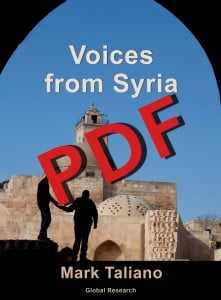



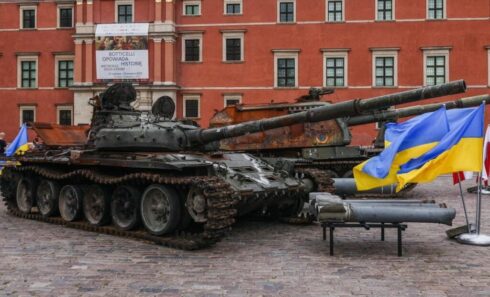
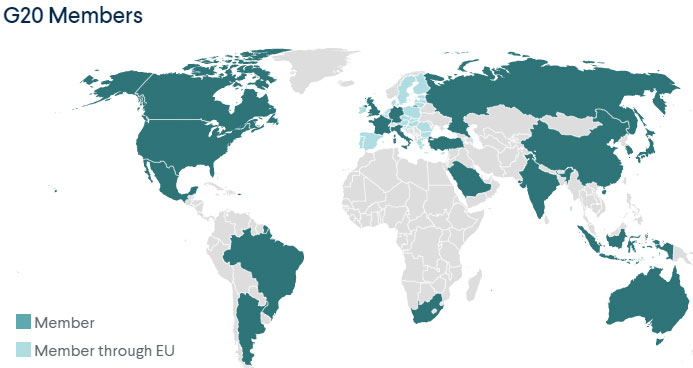

 The Worldwide Corona Crisis, Global Coup d’Etat Against Humanity
The Worldwide Corona Crisis, Global Coup d’Etat Against Humanity
